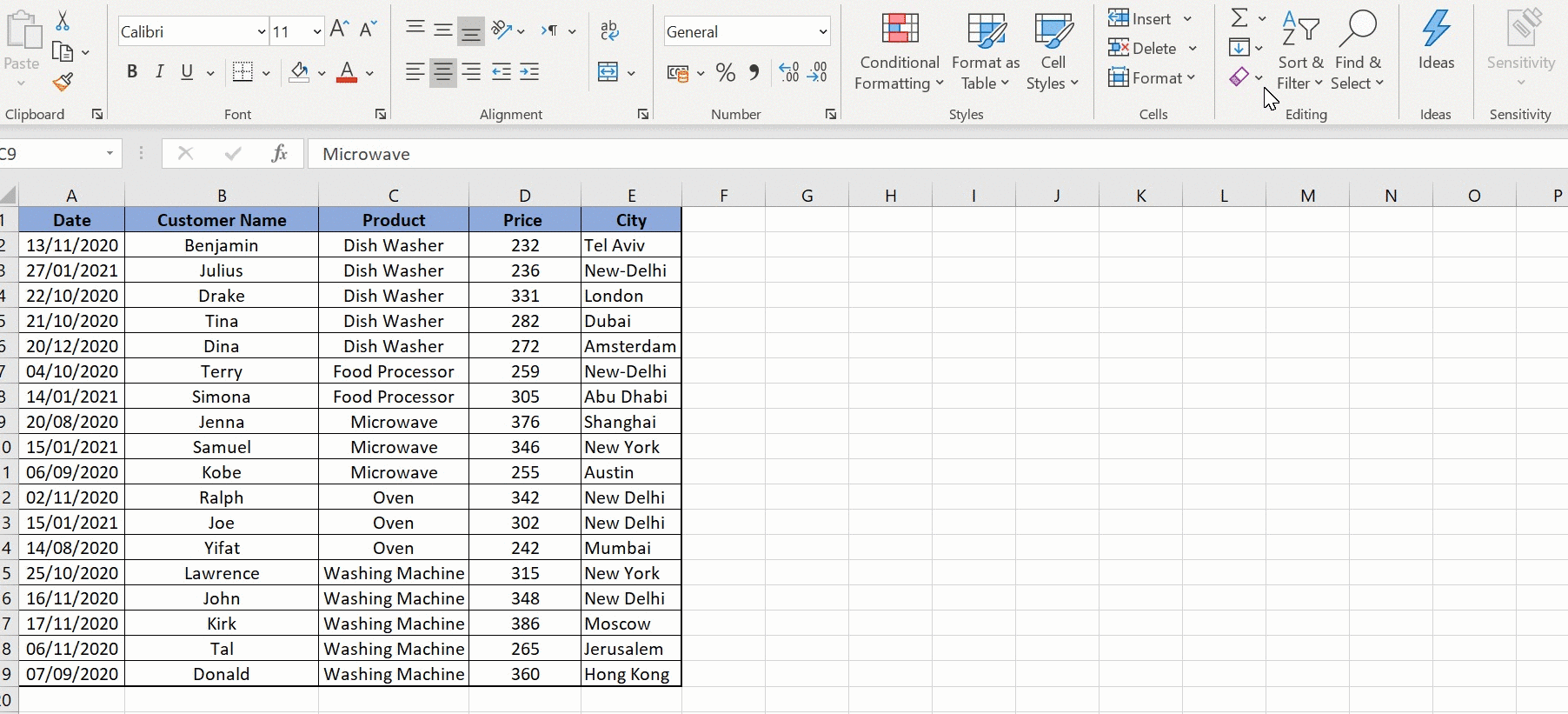5 Easy Ways to Tabulate Data in Excel with a Click

Handling large data sets in Microsoft Excel can be daunting, yet Excel provides intuitive tools that simplify the process. From basic sorting and filtering to advanced pivot tables and conditional formatting, here are five easy ways to tabulate data with just a click. Whether you're a beginner or an Excel veteran, these methods will enhance your efficiency and streamline your data management tasks.
1. Quick Analysis Tool


Excel's Quick Analysis tool is a fantastic feature for instant data analysis. Here's how you can use it:
- Select your data by highlighting the cells.
- Look for the Quick Analysis button (a small square with a sparkline icon) in the lower right corner of your selection.
- Click this button to reveal options like Formatting, Charts, Totals, Tables, and Sparklines.
This tool provides an instant preview of different tabulation and analysis options, allowing you to choose the most suitable method for your data.
💡 Note: The Quick Analysis Tool is available in Excel 2013 and later versions.
2. Sorting and Filtering


When you need to organize or filter your data quickly, Excel's sorting and filtering options are invaluable:
- Select your data range.
- Click the Sort & Filter button in the Home tab.
- Choose between Sort Ascending, Sort Descending, or Filter options.
- Further refine your filter by using Custom Filter for more specific conditions.
Sorting allows you to order data alphabetically, numerically, or by date, making it easier to analyze trends or prioritize information. Filtering helps to display only the data that meet certain criteria, thus tabulating the information for focused analysis.
3. PivotTables


PivotTables are a powerhouse for data tabulation and analysis. Here’s how to create one:
- Highlight your data range.
- Go to Insert > PivotTable.
- Select where you want the PivotTable to be placed (new worksheet or existing sheet).
- Use the PivotTable Field List to drag fields into Rows, Columns, Values, or Filters to tabulate your data dynamically.
PivotTables allow for interactive data exploration where you can change the layout, filter, and calculate data on-the-fly, providing a customizable tabulation experience.
💡 Note: While PivotTables can summarize large datasets, they are most effective when used with structured or clean data.
4. Conditional Formatting


This feature helps to visually tabulate data by changing cell appearance based on their values:
- Select your data range.
- Go to Home > Conditional Formatting.
- Choose from options like Highlight Cell Rules, Data Bars, Color Scales, or Icon Sets to add color-coded tabulation to your data.
Conditional formatting can highlight trends, outliers, or significant data points, making it easier to interpret data at a glance.
5. Use of Tables


Excel Tables offer an easy way to manage and tabulate data with additional features:
- Select your data range.
- Go to Insert > Table or press Ctrl+T.
- Once your data is in a table, you can use features like Table Style, Calculated Columns, or Total Row to tabulate and summarize your data effortlessly.
Using tables automatically provides filtering options, calculated columns, and the ability to add rows and columns with consistent formatting, making data tabulation more structured and manageable.
To conclude, Excel offers a range of powerful tools to tabulate and analyze data efficiently. From the versatile Quick Analysis Tool for instant insights to the analytical depth of PivotTables, Excel empowers users to manage and understand their data with ease. Each method mentioned can be used independently or in combination to provide a comprehensive data overview, making data tabulation accessible to users at any skill level.
Can I automate tabulation in Excel?

+
Yes, you can automate tabulation through VBA (Visual Basic for Applications) scripts or by using macros to execute a series of predefined steps automatically.
How can I tabulate data for large datasets?

+
PivotTables are an excellent choice for tabulating large datasets. They provide summarization, aggregation, and the ability to filter and sort data interactively.
Is there a way to visualize data while tabulating in Excel?

+
Yes, using features like Conditional Formatting, Data Bars, and charts allows for visual tabulation and analysis of data, making patterns and trends more apparent.